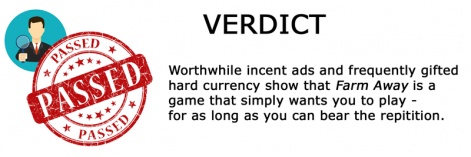Welcome back to the In-App Purchase Inspector - our regular look at free-to-play games from the consumer's perspective.
In each instalment, we consider the incentives or pressure applied to make in-app purchases, their perceived value, the expansion offered by IAPs and the overall value of the experience.
The end goal is to see whether the game makes a good enough case for us to part with our cash, or whether players are content - or engaged enough - to 'freeload'.
This time, we're taking a look at Farm Away, the clicker-style debut release of Helsinki startup Futureplay Games.
Click click click
The clicker genre is a strange one, as its entire raison d'etre is to psychologically exploit the player into continually playing (or clicking).
And while this sounds like a nasty and insidious formula, it gets away with it by being as in-your-face as possible about its intentions.
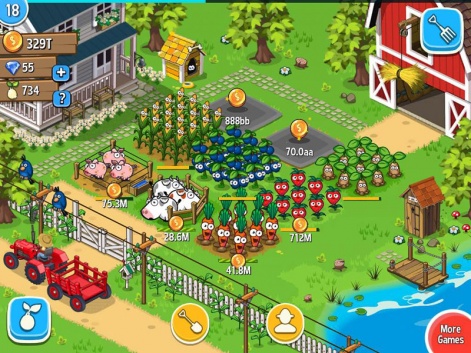
It seems that people are happy to be exploited when the developer is overt about it; a problem only emerges when these systems are packaged in a manner that seems underhand or sneaky.
Your reward for perseverance is to have less and less actual interaction with the game.
And indeed, with the likes of Cookie Clicker inspiring committed procrastinators to merrily while away the hours simply clicking on things - even those who would lambast mobile games built on comparable systems - there is evidently a demand for such experiences.
But how does one introduce free-to-play monetisation into a clicker-style game without becoming an affront to its players?
The answer, if Farm Away is anything to go by, is extremely lightly.
Tap tap tap
The debut title from Helsinki startup Futureplay Games - which is betting big on ads - sees incentivised advertising making up a large part of its monetisation push.
Set in a topsy-turvy universe where being an agricultural worker is an absurdly profitable business, you start out by tapping to plant carrots. They grow, you collect, you profit.
Then cows, then pigs, then strawberries - each time tapping to set the wheels in motion, tapping again to claim profits.
But a billionaire doesn't do their own tapping, and that's what you'll soon become. Then, buying an automation power up is only the way to go.
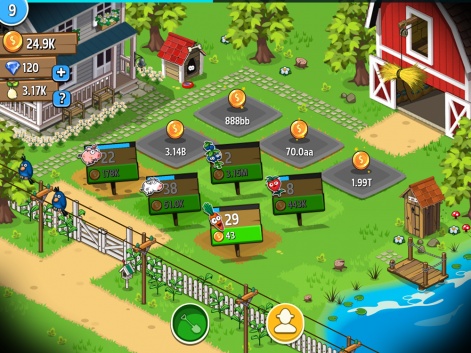
And then, you harvest the lot, gaining seeds in the process, which are used to unlock another set of core multiplers. Of course, post-harvesting, you're planting again.
Gradually earning the money to plant new crops and introduce new livestock, before then setting up the process to automatically renew itself and harvesting ad infinitum, you quickly find yourself accumulating piles and piles of virtual cash without laying a finger on the screen.
The human brain's penchant for shiny things and rising numbers knows no bounds.
That's both the core of its appeal, and the sightly bizarre nature of the genre: your reward for perseverance is to have less and less actual interaction with the game. Tapping, the only input, is quickly accepted as a chore.
This is not a traditional game where simply interacting with it and its world is its own reward; it's all about the exponentially increasing number in the top left corner, and physically tapping stands between you and greater profits.
Gold from greens
Time is money, then, even if you're not playing. You go away for a day, open up the app at night, and you're presented with the mind-boggling amount of gold you've earned while you've been away.
And sometimes you even get the opportunity to watch an ad and double that amount.
So why, with gold flowing so thick and fast, would a player need to either spend money on IAPs or watch ads?
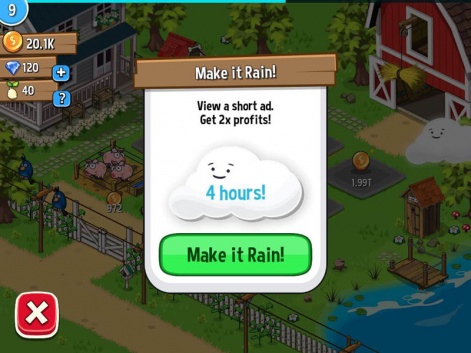
Because enough is never enough. The human brain's penchant for shiny things and rising numbers knows no bounds, and if watching a 20 second video proves conducive to that end, so be it.
View-to-play and ad-first is the essence of Futureplay's manifesto.
That's not to say that Futureplay deserves no credit for its implementation, though. It is, in fact, incredibly smart in the ways it goads you into watching ads and makes you feel as though you'd be stupid not to - and it's already paying off in terms of ARPDAU.
Aside from the previously mentioned daily doubler, the two primary functions of ads are to activate rain and sunshine.
The former is effective over a longer period, doubling the profits of everything grown in the next four hours, while the latter boosts all profits collected within its 20-second limit and has you unleashing a flurry of grabby taps.
Their effect is such that the average player would choose to watch them - 20 seconds of video for four hours of doubled profits has the whiff of a bargain - and they become part of the game's rhythm.
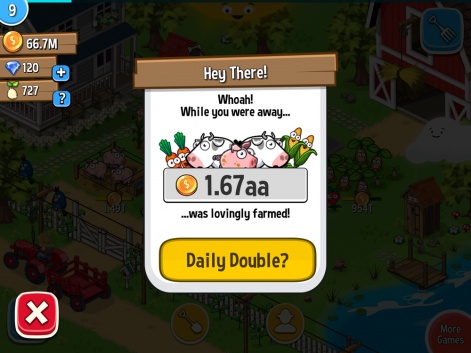
Watch an ad to activate rain, go away for a few hours, watch another to activate sunshine, and then rake in the profits while the bonus still applies. It quickly becomes a pattern, ads ingrained in a way this series has not yet seen.
“View-to-play” and ad-first is the essence of Futureplay's manifesto, and the very limited desire we felt to spend proves that this remains high among its priorities.
(Not quite) all the best things in life are free
There are, however, gems to purchase. There aren't many options, with the highest tier only worth $19.99, but they are there nonetheless.
Having already established a play pattern involving the liberal consumption of video ads, we opted for the lowest tier of gems - 200 at $1.99.
This, along with the generous spoonfuls gifted through standard play, was more than enough to get a feel for gems and their function.
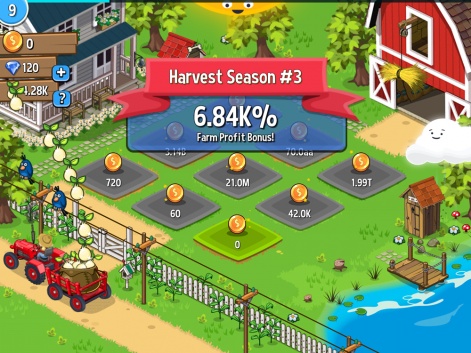
With our 200 yield, we invested in a pair of IAPs that move the clocks ahead four hours at 100 gems apiece, using them simultaneously before collecting the multiplied profits in the ad-activated sunshine.
For those who really don't want to wait for the next profit milestone, this may well be a worthwhile, However, none except the most dedicated will feel the need to pay, and that's the point.
It will be interesting to see whether Futureplay can apply its model to a more involved experience.
Gems can also be used to move the clocks forward 24 hours and 7 days, as well as adding a permanent profit multiplier.
Battery farming
As a proof-of-concept for view-to-play, then, Farm Away is certainly successful.
It is, however, an incredibly non-interactive experience, so it will be interesting to see whether Futureplay can apply its model to a more involved experience.
Or perhaps this is what the most effective view-to-play experiences will be: simple, snacky Skinner box affairs that nail the synthesis of a more-ish progression loop with advertising as one of its central tenets.
However, while it's paying off in the short-term, through repeated play for just a few days it becomes clear that watching ads to boost profits is a system that can quickly lose its lustre.
There's no gacha system to make things interesting, nor indeed is there any change in ad reward for the duration. And while there's something to be said for consistency, the whole process can quite quickly become overly workmanlike.
While imperfect, for the first few sessions Farm Away really shows its mastery in creating a deep hook for players to keep coming back and, even more crucially, keep watching ads.
But whether either the game or its model are fluid enough to sustain that over the long haul is the question you have to ask.
